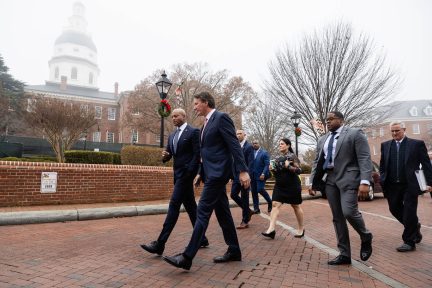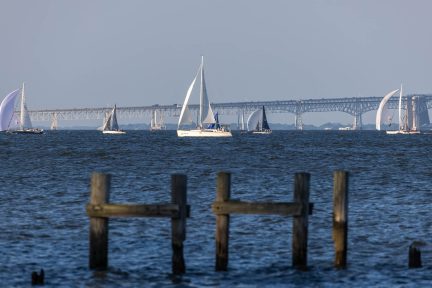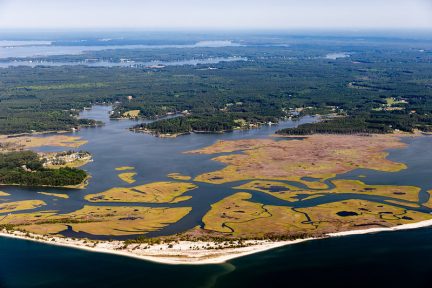Chesapeake Bay Program commits to increasing diversity
The Chesapeake Bay Program is taking steps to make its partnership better reflect the population of the 64,000 square mile watershed that it represents.
The Chesapeake Bay Program is taking steps to make its partnership better reflect the population of the 64,000 square mile watershed that it represents. The partnership recently published results of a diversity profile assessment of staff and partners, an important first step toward improving inclusion of diverse populations in environmental decision making and restoration efforts. The results show that the Chesapeake Bay Program and its partners are well below the national demographic for racial diversity, as 84 percent of respondents identified as white, while only 13 percent identified as non-white. By establishing this baseline, the Bay Program is committing to take actions to be more reflective of the population of the watershed, in which 35 percent of people identify as non-white.
The Chesapeake Bay Watershed Agreement acknowledges that the restoration of the Bay depends on the individuals and communities living within the watershed, as well as represented the first time the partnership adopted a goal to increase the number and diversity of people who support and carry out conservation and restoration work. Under this goal, the Bay Program is working to identify diverse stakeholder groups that are not currently represented in the leadership, decision-making and implementation of current conservation and restoration activities. Diversifying the stakeholder group will create meaningful opportunities and programs to recruit and engage in the efforts of the partnership.
Using a strategy marked by transparency and actionable steps, the Chesapeake Bay Program is driving an effort to own and improve these numbers before the next assessment in 2019. Helping this effort is the Diversity Workgroup, a dynamic assembly of diverse voices from around the watershed. This team is committed to enhancing communications and outreach, creating and expanding employment opportunities for underrepresented individuals and communities, and promoting environmental justice through the meaningful involvement and fair treatment of all people.
The Chesapeake Bay Program partnership is one of many environmental organizations throughout the Bay watershed taking steps to better reflect the population they support, as well as to understand that diversity goes far beyond race. The partnership views diversity as including a wide range of people of all races, income levels, faiths, genders, ages, sexual orientation and disabilities, paying particular attention to the cultures and social concerns of local communities.
When diversity is taken into account in the planning and implementation of conservation and restoration work, this work is likely to benefit underrepresented and underserved communities. Increasing the inclusion of previously underrepresented communities in our work fosters creativity, drives innovation and ensures all people in the watershed can share in the vibrancy of the region. As with the natural world, diversity is seen as a quality that improves and strengthens the organization.
Facts
In 2016, the Alliance for the Chesapeake Bay, on behalf of the Chesapeake Bay Program, distributed a diversity profile to approximately 750 people who work for or within the partnership. The diversity profile found that 84 percent of respondents self-identified as white or Caucasian, which is larger than the portion of United States residents who identify as white (62 percent). 13 percent of respondents self-identified as non-white or non-Caucasian, which is smaller than the portion of the watershed that identifies as non-white (35 percent) and the portion of United States residents who do the same (38 percent).
Issues
The State of Diversity in Environmental Organizations: Mainstream NGOs, Foundations and Government Agencies, a study conducted by Green 2.0, found that despite increasing diversity in the United States, the racial composition in environmental organizations and agencies has not broken the 12 to 16 percent “green ceiling.” This study also found that unconscious bias, discrimination and insular recruiting contribute to the failure of environmental organizations and agencies to increase recruitment and retention of people of color, as well as a lackluster effort and disinterest in addressing diversity.
Importance
Home to 18 million people, the Chesapeake Bay watershed is a region of profound diversity that is essential to the cultural and economic vitality of the nation. The history of the Bay watershed encompasses thousands of years of human settlement, from indigenous people and early colonists to new immigrants. Including all types of voices and communities in environmental protection and restoration efforts is critically important to the success of the Chesapeake Bay Program in an increasingly diverse watershed.
Quotes
“Setting a baseline and being transparent about the state of diversity in our partnership is a critical first step towards increasing the diversity of people who are engaged in the leadership and implementation of restoration efforts throughout the Bay watershed.”
- Jim Edward, Chair of the Chesapeake Bay Program Diversity Workgroup
"Green 2.0 is dedicated to increasing diversity in the environmental movement, and we believe that transparent assessment is a vital first step. We are delighted that the Chesapeake Bay Program has not only taken stock of its diversity but has truly committed to ensuring that it reflects the racial diversity of the Chesapeake region. We look forward to collaborating with them on this initiative."
- Whitney Tome, Executive Director, Green 2.0
“A diverse, inclusive environmental movement is very important. It is good to have people from different experiences and backgrounds; this brings a prismatic approach to solving problems. We all have our own biases and assumptions. Building across differences is important in building a diverse, inclusive movement. Multidimensional people mean multidimensional approaches to solving environmental problems.”
- Dr. Sacoby Wilson, Assistant Professor and Director, Community Engagement, Environmental Justice and Health, Maryland Institute for Applied Environmental Health, School of Public Health, University of Maryland
“If we’re going to talk about improving the environment and our quality of life then communities faced by environmental injustice should also be heard. Low income communities living along our coastlines are typically impacted by climate change and sea level rise. Our most vulnerable families remain a top priority among the conservation community. They should never have to feel left behind.”
- Mariah Davis, Organizer, Virginia Conservation Network



